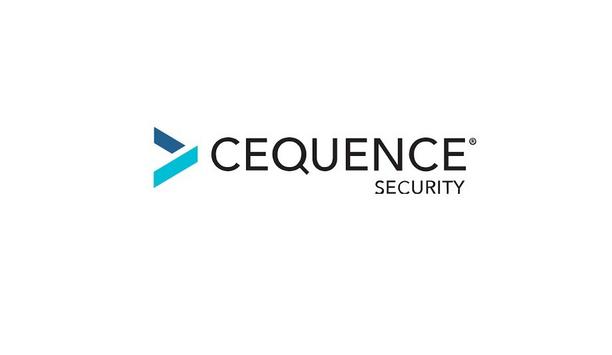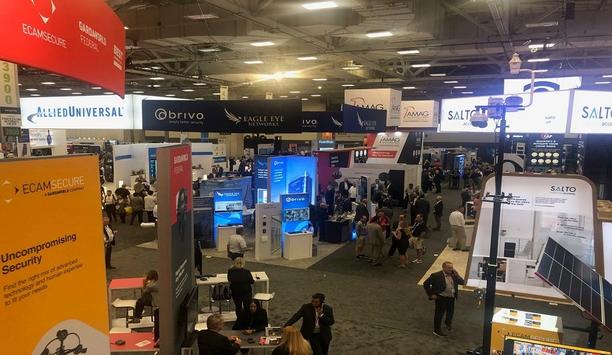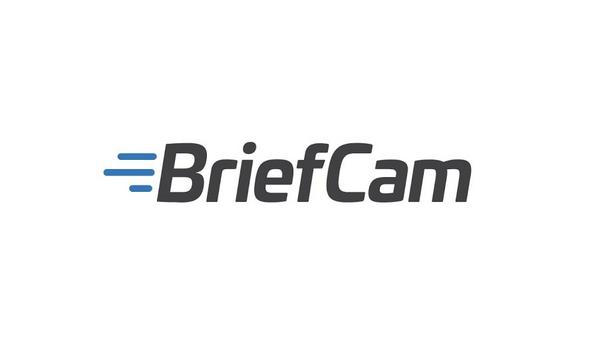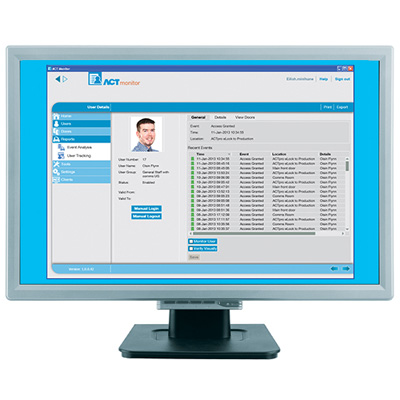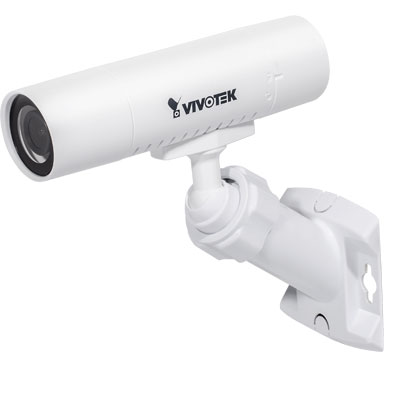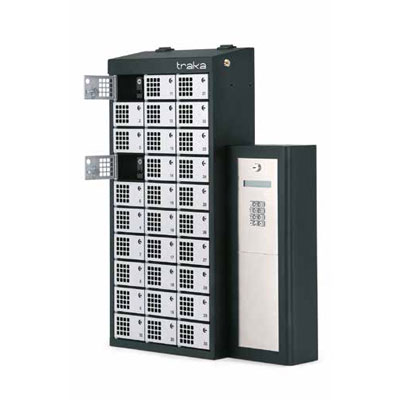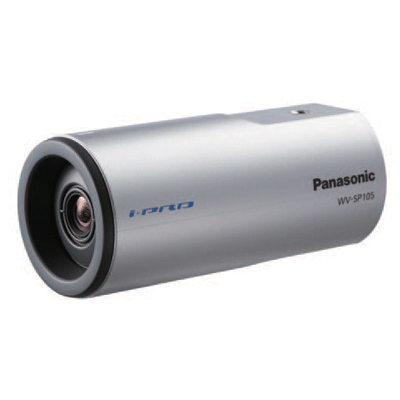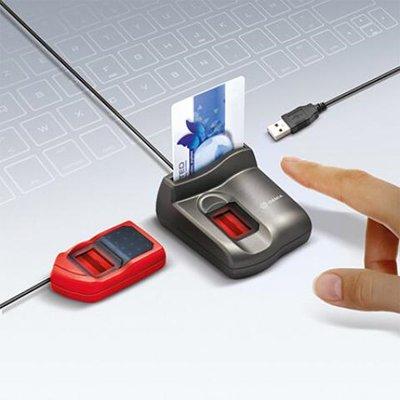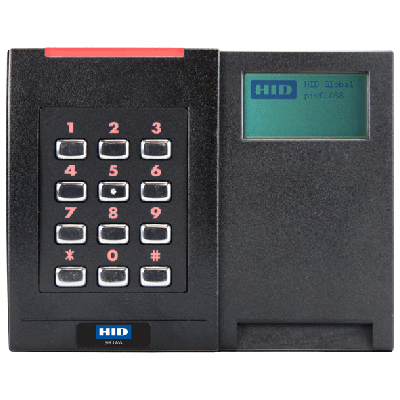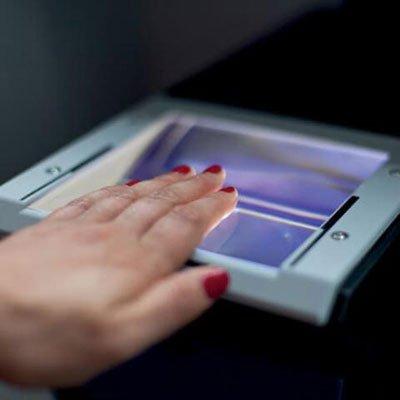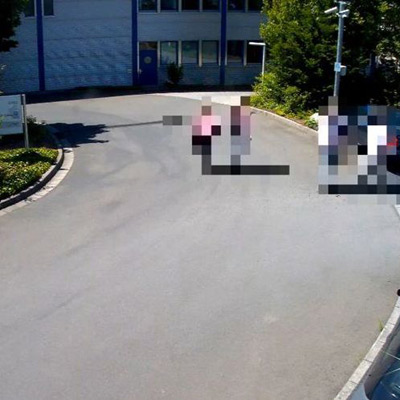Identity management
The company has introduced the IndoorCam. Designed for private households, small offices, and small to medium businesses, it combines Wi-Fi flexibility with Ajax’s professional security standards. Featuring a fallback communication channel via the Jeweller radio protocol, built-in AI, and encrypted data transmission, IndoorCam ensures reliable monitoring. Smart video surveillance with built-in AI PIR sensor detects motion at a distance of up to 4 m, while built-in AI recognises peo...
Integrated Access Control and Security manufacturer TDSi announces its upcoming appearance at The Security Event 2025, which is being held at the Birmingham NEC from 8th to 10th April 2025. Appearing on Stand 5/G60, TDSi will be showcasing its newly launched GARDiS v3 Software and previewing the new TDSi Command + Control PSIM solution, along with perimeter intrusion protection solutions from fellow Vitaprotech Group manufacturer Harper Chalice, security and access control soluti...
NEXT Biometrics, the world pioneer in advanced high-security fingerprint sensor technology, has received the first major purchase order for its FAP 20 sensor in Nigeria. NEXT has already delivered an initial order of NOK 1.7 million during the first quarter of 2025. The NEXT FAP 20 sensor offers unparalleled performance and reliability, setting a new standard for secure identity verification. Integrated into POS terminals Sensor will be integrated into POS terminals to bring strong authentica...
Synechron, a pioneering digital transformation consulting firm, announced the launch of Synechron CyberAI accelerators program. This suite of four AI-driven solutions enhances enterprise security, streamlines compliance, and reduces risk exposure through automation and intelligence. Synechron’s 14th accelerator program RiskControl.AI: Automates IT risk management, offering real-time control assessments and compliance insights. AppSec.AI: Provides a unified view o...
Cequence Security, a pioneer in API security and bot management, announced that it has achieved Amazon Web Services (AWS) Security Competency status in the Cyber Security category. This designation highlights Cequence's proven ability to meet AWS’s rigorous standards for delivering cutting-edge cybersecurity solutions to AWS customers. The AWS Security Competency directly aligns common customer use cases to AWS Partner capabilities, accelerating positive security outcomes. Cequence AWS S...
Allied Telesis, a pioneer in connectivity solutions and intelligent networking tools, announces a strategic technology collaboration with Digital Watchdog (DW). Building on the commitment to innovation, Allied Telesis introduces StreamConnect for DW Spectrum, a dedicated plugin for DW Spectrum IPVMS. This integration enhances network visibility, simplifies device management, and ensures a smarter and more efficient surveillance solution. Advanced surveillance technology StreamConnect is a fam...
News
Advanced Data Risk Management (ADRM), a pioneer in security consulting and managed security services and EyeOTmonitor, a pioneer in network and systems health management for the security industry, are proud to announce a strategic partnership. This collaboration will integrate EyeOTmonitor’s advanced health monitoring capabilities into ADRM’s Security Management Platform, DEFENDER, providing clients with enhanced system health monitoring and real-time change management awareness within their security ecosystems. Integrate with DEFENDER Integrating EyeOTmonitor with DEFENDER will enhance DEFENDER’s native health monitoring capabilities, providing even greater insight into security devices, services, and systems for users. Organisations already using EyeOTmonitor will be able to seamlessly integrate with DEFENDER, consolidating operational visibility into a single platform. Together, these capabilities create a deeper, more proactive approach to maintaining a secure and resilient security environment. DEFENDER security-specific devices Integrating EyeOTmonitor with DEFENDER will enhance DEFENDER’s native health monitoring abilities “This partnership significantly strengthens DEFENDER’s health monitoring capabilities,” said Matt Isgur, ADRM’s Chief Technology Officer. “EyeOTmonitor will seamlessly integrate with DEFENDER to provide enhanced health monitoring for security-specific devices, services, and systems." "In addition to real-time system health insights, DEFENDER will be able to leverage EyeOTmonitor to track environmental changes, ensuring our clients have a comprehensive and proactive view of their security infrastructure in real-time.” EyeOTmonitor platform Kirill Sokolinsky, COO & CPO of EyeOTmonitor, added, “The EyeOTmonitor platform is the perfect match for DEFENDER." "The output from our systems will significantly enhance the health monitoring and complete operating picture ADRM provides for their clients. This is a great win for both of our organisations as well as the security industry as a whole.” Innovation in the security industry Both ADRM and EyeOTmonitor are nimble, forward-thinking organisations that originated as Managed Systems Providers. Their shared commitment to innovation in the security industry makes this partnership a natural fit, strengthening both companies' ability to deliver cutting-edge security solutions.
HID, pioneer in trusted identity and access management solutions, announced the launch of HID Integration Service, a platform that integrates physical security, cybersecurity and digital identity management. This integration platform-as-a-service (IPaaS) was designed to empower application developers, solution integrators and software vendors to seamlessly and rapidly integrate essential physical security solutions, streamlining processes and enhancing system interoperability. Physical security and cybersecurity systems The platform aims to ease the burden of maintenance and upgrades associated with managing systems By doing so, the platform aims to ease the burden of maintenance and upgrades associated with managing and implementing integrations between physical security and cybersecurity systems, thereby lowering costs, streamlining operations and significantly reducing implementation time. "Organisations have long struggled with brittle, complex integrations and the costs to maintain them," said Martin Ladstaetter, senior vice president and head of Identity and Access Management Solutions at HID. "HID Integration Service eliminates these pain points by providing an integration platform that connects physical and digital security products, reducing time to market for development partners who are building the next generation of security solutions with greater speed, quality, resilience and value." Unified management solutions HID Integration Service directly addresses the top benefits security pioneers seek from unified management solutions—improved efficiencies, simplified management and enhanced visibility—helping them: Reduce operational complexities and maintenance costs. Deliver new security capabilities faster into tailored industry solutions. Simplify security touchpoints through streamlined user experiences. Key features A comprehensive integration layer that scales from point-to-point connections into multi-party integrations Pre-built integrations that accelerate deployment and reduce development costs Scalability and security to support rapidly evolving business needs HID's new integration platform capabilities Each brings deep expertise and robust capabilities across various technologies HID is privileged to have a few early adopters on the platform. Each brings deep expertise and robust capabilities across various technologies, verticals and security domains. "We are excited about HID's new integration platform capabilities, which we believe can only add to SwiftConnect's ability to meet our customers' expectations and broader needs in the commercial real estate and enterprise markets," according to Matt Kopel, co-founder and co-CEO of SwiftConnect. "The alignment of vision and direction between our companies will enhance and multiply the business changes our customers are pursuing," continued Kopel. HID’s 2025 State of Security and Identity Report “We envision a world where ID photos magically arrive in their intended location without human intervention,” said Luke Rettstatt, chief executive officer of CloudCard. “To realise this vision, we must develop and maintain many integrations, which is daunting for a small team. HID Integration Service allows us to focus on RemotePhoto's AI workflow rather than building and maintaining certified integrations with third parties.” This growing demand for seamless integration and efficiency is reflected in HID’s 2025 State of Security and Identity Report. According to the report, 67% of security pioneers are actively transitioning to software-driven security solutions, with nearly three-quarters of organisations considering unified data collection critical to their operations.
Cowbell, a pioneer provider of cyber insurance for small and medium-sized enterprises (SMEs) and middle-market businesses. It has expanded its Cowbell Connectors to over 30 integrations with top security and cloud service providers. Stronger security insights Cowbell Connectors enhance cyber risk assessment and underwriting by drawing on inside-out dataWhile many businesses focus solely on outside-in or partial internal data, Cowbell Connectors enhance cyber risk assessment and underwriting by drawing on inside-out data, securely pulling real-time insights from: Cloud environments like AWS, Azure, and GCP Vulnerability scanners such as Tenable, Qualys, and Rapid7 InsightVM Endpoint security solutions like CrowdStrike, SentinelOne, and SophosIdentity and access management platforms such as Okta, Microsoft Entra, and Arnica Compliance-focused tools like Qualys Policy Compliance and Security Studio. Reducing cyber risk These newly expanded integrations - designed to be used as part of a multi-layered model including outside-in data, dark web intelligence, threat intelligence, loss cost and historical claims, and regulatory compliance - come in response to rising cyber attacks, with the U.S. among the countries with high data breach density. Last year, there were over 6.85 billion known records breached in the U.S., while the average cost of a data breach amounted to 9.36 million U.S. dollars; figures Cowbell expects to rise this year, with advances in AI and geopolitical conflicts both contributing to increased risk. Strengthening cyber resilience Rajeev Gupta, co-founder & Chief Product Officer at Cowbell, shared: “A 2024 survey among chief information security officers (CISO) in the US showed that almost 9 in 10 organisations were at risk of a material cyberattack in the following 12 months; damaging both reputation and bottom lines. It’s now 2025 and the situation is only worsening; AI advancements have continued, empowering cybercriminals to execute more adaptive and scalable attacks, while geopolitical instability is increasingly manifesting in cyberspace.” “With threats evolving faster than ever, businesses must up their game. This is where - following the launch of our Cowbell Resiliency Services (CRS) unit in February this year - our expanded Cowbell Connectors come in, providing a 360-degree view of businesses’ security posture, bolstered by real-time inside-out insights.” Optimised cyber coverage Cowbell’s proprietary, AI-driven risk ratings – policyholders pave the way for more precise underwritingBy feeding inside-out insights into Cowbell Factors - Cowbell’s proprietary, AI-driven risk ratings - policyholders can not only address and patch vulnerabilities quickly, but also pave the way for more precise underwriting, ensuring coverage accurately reflects the true level of risk exposure. Demonstrating strong internal controls to underwriters and improving risk rating over time can also result to lower premiums or more favorable coverage terms. Expanding cyber integrations While businesses and brokers can explore the full suite of integrations in the Cowbell platform today, there are also plans to double its integrations this year, adding a further 30 connectors covering categories including cloud, email and endpoint security, third-party risk management, and SIEM (Security Information & Event Management) platforms. Keen to help support businesses in the best way possible, Cowbell has also said it is open to exploring new integrations based directly on the needs of its users.
Regula, a global developer of forensic devices and identity verification solutions, now has 15,000 templates in its identity document template database, the most comprehensive in the world. This significant update ensures that businesses and government agencies around the globe can verify the latest IDs, including the most advanced biometric documents, with the highest accuracy. Global ID verification simplified Incorporating ID templates from 251 countries and territories and capable of reading 138 national languagesRegula’s proprietary identity document template database contains detailed descriptions of each document’s security features. Combined with the advanced capabilities of Regula Document Reader SDK, this enables online ID verification with the same level of precision previously achievable only in on-site scenarios. Incorporating ID templates from 251 countries and territories and capable of reading 138 national languages, this database enables the recognition and proper verification of nearly every ID from any corner of the world, even the rarest ones. Tracking global shifts in identity documents The latest expansion of Regula’s ID template database reflects the global shift towards more sophisticated identity documents. More and more countries are introducing biometric passports, which are considered the most secure at the moment. For example, among the recent additions to Regula’s database are the first-ever biometric passports issued by India, Sri Lanka, and Guyana. Apart from the format, documents’ security features are also becoming more complex and elaborate. First and foremost, ID issuers are switching from paper substrates in favour of polycarbonate pages, which are much harder to counterfeit. For this reason, states like Benin, Burkina Faso, Chile, and Djibouti have recently issued new IDs with polycarbonate data pages. Advanced ID security features MLIs significantly enhance document protection with hard to illegally duplicate by designAnother advanced security feature that has become quite widespread across different identity documents is the Multiple Laser Image (MLI). An MLI embeds two distinct images within a document. Typically, these include the passport holder’s photo and their personal data. Special lenses positioned above the images can visualise either image clearly by tilting the document. Hard to illegally duplicate by design, MLIs significantly enhance document protection. Among the IDs that were added to Regula’s ID template database with the latest update, the US driver’s licence from Wisconsin, as well as the ID cards of Jamaica, San Marino, and Yemen contain such security features. Combating fraud with precision “The growing complexity of identity documents presents notable challenges for ID verification workflows. Businesses and government agencies must be prepared to properly verify all the document security features so as not to miss any forgery or identity fraud attempts.” “Furthermore, they have to handle multiple ID versions from the same country simultaneously, as many older documents remain in circulation alongside the new formats. By keeping pace with evolving security features and document standards, we help streamline ID verification workflows, reduce fraud risks, and maintain compliance with global regulations,” says Ihar Kliashchou, Chief Technology Officer at Regula. Expanding global ID coverage Among the new IDs added to Regula’s database to hit 15,000 templates are the following, issued in 2024-2025: Passports: Azerbaijan Benin Burkina Faso Burundi Chile Djibouti Germany Guyana India Kosovo Malawi Myanmar Netherlands Romania Saint Kitts and Nevis Slovakia Sri Lanka Tajikistan ID cards: Argentina Bosnia and Herzegovina Chile Guatemala Jamaica Kazakstan Kosovo Netherlands Nigeria Norway Philippines Puerto Rico San Marino Slovakia Somalia Sri Lanka Vietnam Yemen Driver’s licences: Azerbaijan Denmark Honduras Iran Kosovo Mongolia Puerto Rico Slovakia Sweden Venezuela Bolivia US states: Michigan, Mississippi, New Hampshire, North Carolina, Tennessee, Wisconsin
Sumsub, a full-cycle verification platform, is launching its Reusable Digital Identity product suite. It will effectively mitigate repetitive verification and redundant Know Your Customer (KYC) checks that negatively impact user experience and conversion rates for businesses. The new offerings are set to reduce applicant onboarding times by 50% and boost conversion rates by 30%, on average. Identity multiple services All of the checks required for ensuring a compliant verification must still take place KYC is essential for security, fraud prevention and compliance. However, when users need to verify their identity repeatedly across multiple services – especially when seeking critical access to financial or transportation apps – it creates friction and frustration. This repetitive process often leads to high drop-off rates and less user interest, impacting both user experience and business conversion rates. At the same time, all of the checks required for ensuring a compliant verification must still take place. Sumsub compliance and security Sumsub is processing millions of identity checks weekly, and aggregated data analysis reveals that one in three applicants have verified previously with Sumsub, highlighting the recurring KYC issue. To address this, Sumsub has launched a combined product to help both individuals and firms alike avoid repetitive verification steps while ensuring full compliance and security. Reusable Digital Identity product Reusable Digital Identity product suite includes two products, Sumsub ID and Reusable KYC The Reusable Digital Identity product suite includes two products, Sumsub ID and Reusable KYC. Both of them enable end-users to skip cumbersome verification steps such as document uploads, while at the same time ensuring that all checks required for regulatory adherence for businesses still take place. Sumsub ID enables end-users to securely store and re-use their verified documents for multiple verifications across Sumsub client platforms, whereas Reusable KYC allows companies in the Sumsub ecosystem to agree to share applicants’ data upon receiving their consent. Reusable Digital Identity While each product has a unique approach to the same challenge, both of them further enhance customer experience while ensuring full compliance and adding an extra layer of security. By offering faster and more efficient ways to verify identities, Reusable Digital Identity is designed to help users avoid unnecessary document uploads and repetitive data input procedures–while, at the same time, speeding up applicant onboarding and enhancing conversion rates for companies. Redefining digital ID verification Reusable Digital Identity is designed to help users avoid unnecessary document uploads “With a decade of experience in the market, our vision remains clear – to provide global businesses digital identity checks with the speed and convenience of payments, without sacrificing on compliance and security”, comments Vyacheslav Zholudev, CTO and co-founder of Sumsub. “With Sumsub ID and Reusable KYC, we are redefining digital ID verification by helping businesses improve onboarding efficiency and also giving users full control over their documents and data, respectively. This marks a significant milestone in our mission to make identity verification faster, safer, and more reliable for everyone.” Key benefits of Sumsub Identity products Key benefits of Sumsub Reusable Digital Identity products for businesses are: Higher pass rates: businesses see up to 30% improvement in successful user verifications. Faster KYC processes: Sumsub ID reduces onboarding time by 50%, improving conversion rates. Full Compliance & Security: Both Reusable KYC and Sumsub ID are GDPR-compliant and built to enhance fraud prevention. Main benefits for users are: Seamless verification: individuals can breeze through KYC by re-using their documents from previous verifications with Sumsub. Full privacy and security of personal data stored or shared by third parties for verification purposes. Less time spent on getting access to the platforms and services people use, as both Sumsub ID and Reusable KYC make the onboarding process faster by eliminating redundant document uploads. How Sumsub reusable digital identity product suite works Sumsub ID allows applicants to onboard onto a platform within the Sumsub ecosystem, securely store their verified documents, and reuse them for future verifications across 4000+ companies which also use Sumsub; Reusable KYC enables companies to share users’ personal data with their explicit consent, ensuring quicker onboarding, which benefits companies and individuals alike. Sumsub ID is now available for anyone to sign up and benefit from seamless verification and onboarding across crypto, fintech, banking, e-commerce, traditional finance, security, regtech, and fraud prevention industries.
Teledyne FLIR OEM, part of Teledyne Technologies Incorporated, announced Prism™ SKR, the newest addition to the Prism embedded software ecosystem. Prism SKR, pronounced “seeker,” sets a new standard in precision automatic target recognition (ATR) for autonomously guided weapon systems, including loitering munitions, air-launched effects (ALE), counter-unmanned aerial systems (C-UAS), low-cost missiles, and smart munitions. Prism SKR's advanced algorithms Prism SKR operates seamlessly at the edge on low-power embedded processors Prism SKR operates seamlessly at the edge on low-power embedded processors. Compatible with both infrared (IR) thermal and visible camera data, Prism SKR's advanced algorithms provide real-time target position, identification, direction of motion, and aim-point localisation. The target information is used to guide the platform's autonomous flight system for air-to-ground (A2G), ground-to-air, air-to-air, and ground-to-ground operations. Prism embedded software ecosystem “Compatible with existing autonomy and navigation software via a Weapon Open System Architecture (WOSA) compliant interface, Prism SKR represents a significant leap forward in autonomous precision target detection, identification, and tracking technology for defence OEM developers and integrators,” said Dan Walker, vice president of product management, Teledyne FLIR OEM. “Additionally, developers can reduce development risk and costs with plug-and-play integration with the Prism embedded software ecosystem and Teledyne FLIR IR camera modules.” Prism AIMMGen synthetic dataset Custom target lists can quickly be incorporated using the Prism AIMMGen synthetic dataset The Prism software ecosystem streamlines development and shortens time to market with out-of-the-box compatibility. Starting with the Prism AI embedded software, developers and integrators can utilise detection and tracking models leveraging Teledyne FLIR OEM's six million visible and thermal annotations. Custom target lists can quickly be incorporated using the Prism AIMMGen synthetic dataset and model training toolchain. Finally, Prism Supervisor empowers autonomous mission control and platform guidance with Prism SKR, where ATR is required. Ultimate solution for OEMs With its advanced features, robust ecosystem, and a complete application programming interface (API) and software development kit (SDK) for customisation and performance optimisation, Prism SKR is the ultimate solution for OEMs seeking to enhance the precision and reliability of autonomous weapon systems. Teledyne FLIR OEM will show Prism at SPIE Defense + Commercial Sensing in Orlando, Florida, April 13-17, 2025.


Expert commentary
In today's rapidly evolving security landscape, facial recognition has become a buzzword that often triggers privacy and data protection concerns. However, many security professionals may not realise that "facial recognition" is an umbrella term encompassing various technologies, each with distinct applications and privacy implications. Let's dive into what these technologies really mean for security system resellers, integrators, and end-users. Facial recognition tech At its core, facial recognition technology re-identifies or verifies individuals based on their facial features, which are used as biometrics. However, not all biometric systems are based on unique identifying features. Some analyse general characteristics like facial hair style or other distinctive marks. Such traits, known as soft biometrics, can aid in identification but aren't unique enough to verify someone's identity uniquely. Personally identifiable information Modern systems incorporate robust safeguards, including data encryption and strict retention policies While facial recognition technology has applications ranging from access control to crime prevention to investigation, its implementation varies widely depending on specific needs. Modern systems incorporate robust safeguards, including data encryption and strict retention policies, to ensure the responsible handling of any personally identifiable information (PII). Understanding key technologies and applications Facial recognition encompasses several distinct technologies, each serving specific purposes. Here's a comprehensive breakdown of these technologies and their real-world applications. Key technologies: Face Verification (1:1): A one-to-one comparison where a person claims an identity (e.g., by showing an ID card), and the system verifies whether the face matches the provided identity. Example: In airports, face verification is used for automated passport control. When a traveler approaches a gate, their face is scanned and compared to the photo stored in the government database. If the face matches, the traveler is allowed through the gate without manual checks. Face Identification (1 to many): A one-to-many comparison, where a face captured by a system is compared to a database of multiple faces and facial features to identify the person. This process is often used in security or surveillance contexts. Example: In the case of a missing child at an airport, a system could scan the faces of all passengers passing through checkpoints and compare them to a photo of the child in a database. If a match is found, it triggers an alert. Face Re-identification (Many to Many): Many-to-many comparisons where multiple faces are compared to multiple other faces. This is typically used to track a person’s movement anonymously across different areas by matching their facial images at different checkpoints, without knowing their identity. Example: In a retail environment, facial re-identification might be used to track how long an anonymous person spends moving from one section of a store to another by re-identifying their face as they enter and leave different camera views. Facial recognition can be used both for real-time and offline applications. Real-Time Facial Recognition: Real-time facial recognition refers to the immediate processing of a live video feed, comparing faces to a database to generate instant alerts when a match is found. Example: At large public events like sports stadiums, real-time facial recognition might be used to detect banned individuals (e.g., known hooligans) as they attempt to enter. Post-Event (Recorded) Facial Recognition: This refers to analysing video recordings after the event has occurred, rather than in real-time. Facial recognition is applied to recorded data to identify or track individuals. Example: After a crime, investigators could use facial recognition software on recorded video from security cameras to identify suspects by matching their faces to known databases. These definitions cover various aspects of facial recognition technology, its different applications, and how biometrics are used for identification and tracking purposes. Biometrics: Biometric technologies use a person’s distinguishing physical characteristics, such as their face, fingerprint, or iris, to identify them. Example: Fingerprint or face scanning for unlocking a phone or using iris recognition for secure entry at high-security buildings like data centers. Hard Biometrics: Hard biometrics refer to physical characteristics that are sufficiently unique enough to be used for identifying a specific individual, such as a face, fingerprint, or iris. Example: Using iris recognition at airport security checkpoints to confirm the identity of a traveler. Soft Biometrics: Soft biometrics (personal features) include general attributes like height or body shape, which are not unique enough to identify a person on their own but can help narrow down re-identification when combined with other information. Example: Using height and body shape to help identify a suspect in a camera scene when facial features alone are unreliable. Appearance Similarity: This refers to distinguishing between people based on their appearance (e.g., clothing, accessories) rather than biometric features. It’s often used for accelerated investigation and statistical analysis rather than identification. Example: A retail store may track customers based on the clothes they are wearing to monitor how long they stay in the store, without tracking their faces or personal details. Liveness Detection: A method used to determine whether the subject in front of a facial recognition system is a live human being and not a photo or a video recording. Example: In some mobile payment systems, facial recognition requires users to blink or move their head slightly to ensure they are a live person and not someone trying to use a photo for authentication. Mathematical Representation: Non-reversible mathematical representations are lists of numbers based on a person's facial image or appearance based on clothing. These numbers represent characteristics but cannot be easily used to recreate the face. Example: When an organisation stores only the mathematical representations from a face rather than an actual image, even if the data is stolen, it is nearly impossible to recreate the person’s face or use the data with another system. Privacy and security considerations Modern facial recognition systems prioritise privacy through various protective measures, moving far beyond the basic security protocols of the past. Solutions integrate multiple layers of protection designed to safeguard personal data while maintaining system effectiveness. These sophisticated privacy controls work in concert to ensure responsible data handling and comply with evolving security standards. Key protective measures include: Biometric template isolation that keeps facial recognition templates separate from other personal data, with dedicated secure storage environments. Template encryption frameworks specifically designed for biometric data, using industry-standard protocols that protect facial features during both processing and storage. Biometric data anonymisation that converts facial features into non-reversible mathematical representations – into numbers - prevents the reconstruction of original face images. Cascading deletion protocols automatically remove both raw facial data and derived biometric templates after their authorised use period. Segmented access controls that separate facial recognition administrative functions (like enrollment and template management) from regular system operation. Privacy standards The key is selecting the right tool for each application and ensuring that personal data is collected The security industry continues to evolve, finding innovative ways to balance effective surveillance with privacy protection. By understanding this comprehensive range of technologies, security professionals can better serve their clients with solutions that address specific needs while maintaining appropriate privacy standards. The key is selecting the right tool for each application and ensuring that personal data is collected only when necessary and protected when it is not. Statistical analysis and pattern recognition The variety of facial recognition applications demonstrates that not all systems require storing personal information. Many modern solutions focus on statistical analysis and pattern recognition rather than individual identification, offering powerful security benefits while respecting privacy concerns. This balance of capability and responsibility represents the future of video security technology.
Security technology has witnessed huge advancements in recent years, particularly for those protecting critical assets or information. Facial and fingerprint recognition, ANPR and even 'mac addresses' or a person of interest's gait, now all make up the technology toolbox of forward-thinking organisations' security policy. However, humans remain the weakest link in any security chain, and the only way to correct this is to eliminate the human burden, argues Richard Hilson, head of sales for security access management specialist, Parking Facilities. Here, he examines the pitfalls in relying upon human intervention in critical national infrastructure (CNI) settings, and the future of biometrics to keep assets, information and personnel safe. Recent Verizon report 74 percent of corps are saying that insider threats are becoming more of a concern for them As with any workplace initiative, be it a simple recycling policy or a corporate password protection directive, technology is only as good as those who implement or operate it. Whilst technology can be fallible and gremlins do arise, it’s never as flawed as us mere humans with our unreliable ‘on/off’ switch. Likewise, we carry the ability to reason, to override procedures, or ignore policy, should we wish. Or as it happens, just make mistakes. In fact, according to a recent Verizon report, two out of three insider attacks happen as a result of negligence, and 74 percent of organisations are saying that insider threats are becoming more of a concern for them. Fundamental security practices Security breaches aren’t limited to external threats either, whether intentionally or not, they can come from within. Humans can, and do, ‘go rogue’, whether that’s pre-meditated criminal or malicious intent, or just by taking shortcuts. While data breaches court most news headlines in this digital era, some of the most significant security risks are those posed when employees neglect fundamental security practices such as sharing passwords or access cards. Employee negligence and insider threats Insider negligence remains one of the pioneering causes of security breaches Insider negligence remains one of the pioneering causes of security breaches. Employees who share passwords or access cards may do so out of convenience, ignorance, or a misplaced sense of trust. Unfortunately, this creates vulnerabilities that are left open to exploitation. When multiple employees share credentials, it becomes difficult to trace actions to a single individual. This lack of accountability can complicate incident investigations and allows malicious activities to go undetected. Emergency services resources Furthermore, the sharing of passwords or access cards means inaccurate accounting of personnel, and in the event of an evacuation or major incident, central IT systems will hold misleading information of employees’ locations which could have a huge impact upon safety and potentially emergency services resources. Employees with malicious intent can exploit shared credentials to carry out unauthorised activities while shifting blame to others, increasing the risk of deliberate sabotage or theft of sensitive data. Even when there is no malicious intent, employees who share access credentials risk unintentionally exposing them to unauthorised individuals, such as contractors, visitors, or external attackers. What happens when employees compromise security? Access cards are designed to limit entry to restricted physical locations. When shared, unauthorised personnel could enter secure areas such as control rooms, rail lines, large construction sites, data centres, power plants or indeed any site meant to be kept secure. This creates opportunities for sabotage, theft, or corporate espionage. Sensitive data held within critical sites, such as blueprints, system controls, and customer records Likewise, shared passwords can lead to unauthorised entry into IT systems, allowing hackers to install malware, ransomware, or spyware. For example, a cybercriminal gaining access to an energy grid system could shut down power to entire regions, causing chaos to millions of people, and disrupting essential services. And not all data breaches are caused by online hackers gaining entry through unsecure firewalls. Sensitive information held within critical sites, such as blueprints, system controls, and customer records, becomes vulnerable when access credentials are shared too, and the disclosure of such information can have a serious impact upon a company’s bottom line, operations, and ultimately its reputation. Eliminating the human burden One way to prevent human error, or to thwart malpractice is to reduce the burden upon employees to be compliant, and eliminate our flaws by using technology that requires no intervention, decision-making or reason. Facial recognition is widely used in the civil world now, despite the concerns of various lobbyists. Used correctly it is not a ‘catch all’, but an instant recognition of persons of interest cross referenced against a database of known suspects. Our car parks are governed by automatic number plate recognition (ANPR) to gain access in and out, while border controls are using advanced biometrics for everything from facial and fingerprint recognition, through to recognition of human characteristics and gait, for both entry and to apprehend. The UK Home Office is even accelerating its transition to digital border management, using biometric technology to improve efficiencies, safety, and to track and capture known or illegal persons. What of the CNI sites? But what of the corporate world? What of the CNI sites, our airports, our national construction developments such as HS2 or our high-rise office spaces? We always ask this very question, and also ‘can you afford a security breach’ in whatever environment you’re in? Because the smart, cloud-based technology being used by governments, law enforcement authorities and Border Force have cascaded down through the civil and corporate worlds. Immediate safety and security Security-conscious corps are diligently removing human error, by eliminating the human burden Security-conscious organisations are now diligently removing human error, by eliminating the human burden. With cloud-managed software not only are access points managed through biometric integration, but it also overcomes the issues mentioned earlier around accountability - in that the cloud will always register who has passed through an access point, or out of it. This is critical for both immediate safety and security but also for matters arising from a crisis, or emergency situation. It’s also less admin-heavy, more cost-effective and can manage and store employee records, including background checks. Employee or contractor data is encrypted, their information is safe, their interactions are secure, and businesses are protected. Implement robust access management systems Simple acts of negligence, such as sharing passwords or access cards, can open the door to catastrophic consequences, operational disruption, financial loss, and even, in the case of CNI, national security risks. To mitigate this, organisations can do worse than to implement robust access management systems, and in doing so, release employees from having to be accountable for ensuring the security of the sites in which they work. As artificial intelligence evolves, I see even more robust biometrics coming to the fore, until such time we work and live in environments that are controlled without us even knowing security checkpoints are all around us, and access management happening at every step. It will become as ‘every day’ as an automatic door allowing entry into our local supermarket - but we’re not quite there yet.
The European Union’s GDPR (General Data Protection Regulation) framework represents some of the toughest and most secure privacy laws in the world. Their creation signaled the EU’s dedication to individual privacy rights and generated new standards and requirements for an organisation inside or outside of the EU wanting to do business in the region. This privacy stance raises an interesting question: to what extent (if any) will France be utilising AI-assisted security and biometrics - at the upcoming Paris Summer Olympic Games? AI-assisted security systems As France prepares to host this global event, certain AI-assisted security systems like algorithmic video monitoring have been tested and are planned to be in use. The country also passed a law with a legal framework for addressing provisions of hosting the Games in their country, Law No. 2023-380. These technologies will support the police and security efforts to detect sudden crowd movements, irregular vehicle, and pedestrian movements, abandoned objects, people lying on the ground, and more, any of which could indicate an attack. Local connectivity One recent French poll found that an overwhelming number of respondents support the use of smart cameras Such technologies, which can be connected directly to localised command centers and police departments, provide an opportunity to prevent deadly incidents like the bombing at the 1996 Summer Olympics in Atlanta, GA. There are signs that citizens of the EU are becoming more receptive to such measures, with one recent French poll finding that an overwhelming number of respondents (89 percent) support the use of smart cameras in stadiums for this purpose. Biometric technology The general public and private use of biometric technology (face matching, face liveness, and other biometric modalities), on the other hand, continues to run into challenges with adoption in this privacy-focused region. For the most part, laws ban facial recognition, permitting its use only once someone has been convicted or is suspected of having committed a serious crime. Limitations of video surveillance Limiting the utility of biometrics to only video surveillance for an event of the Paris Olympics’ magnitude is not the best approach. The ability to quickly identify or de-identify possible suspects from regular attendees greatly strengthens the activities of the police and helps protect the rights of regular attendees. Consider the example of New York City detectives using facial recognition to identify a man who, in 2019, left a pair of potential bombs in the Fulton Street subway station. Benefits of facial recognition technology Many believe that the use of facial recognition could have expedited and solved the Boston Marathon bombing tragedy With facial recognition technology, it took only one hour to identify the suspect - a process that previously would have taken several hours or even days, leaving the possibility of further damage unresolved. Citing yet another example, many believe that the use of facial recognition could have expedited and solved the Boston Marathon bombing tragedy much sooner and more efficiently, aiding investigators who reportedly had to sift through 120,000 photos and nearly 13,000 videos before identifying the perpetrator. Need for real-time video With an estimated 16 million visitors expected to descend upon France for the Games - and an environment that is harder to protect from bad actors - is limiting the use of biometrics to video surveillance the most effective? In our minds, in certain high-urgency cases, such as tracking kidnapping cases or possible terrorism activity, it should be permissible for facial recognition to be applied to recorded video in real-time and without delay. Public safety Beyond this obvious good that biometrics can bring from a public safety perspective, there are other ways that biometrics can be woven into the fabric of the Summer Olympics to support a faster, more enjoyable experience for all. Consider queue management. In a few weeks, an estimated 2.3 to 3.1 million ticket holders will form lines to access Olympic events. Fingerprint scanning technology People could pass through lines in mere fractions of a second, versus having to fumble for a paper ticket If fingerprints were captured at the point of ticket purchase and fingerprint scanning technologies made available on-site, people could pass through lines in mere fractions of a second, versus having to fumble for a paper ticket that may be torn or damaged, or an e-ticket on a phone with a dead battery. This would speed up the processing of queues tremendously. Olympics-focused gambling activity Another area where biometrics can be beneficial is in Olympics-focused gambling activity, which is expected to gain steam as the Games get underway. Biometrics can be used to match facial images with legal documentation for age verification, and then combined with geofencing to ensure gambling participants are of legal age, depending on where they are physically based. Biometrics also makes it possible to identify, beyond the shadow of a doubt, all of the activities of particular individuals, which can help track nefarious activities like money laundering. Evolution of privacy and security We believe biometrics can be a force for major good in our society and around various facets of the upcoming Paris Olympics, most notably public safety. It will be interesting to watch both the 2024 Summer Olympics and the ongoing evolution of privacy and security laws and practices in France and the European Union.
Security beat
An attention-grabbing exhibit at GSX 2024 in Orlando involved a robot dog that could open a door. Boston Dynamics robot dog ASSA ABLOY impressed attendees with the robotics demonstration, featuring the Boston Dynamics robot dog that could open a door using either an HID credential or a mechanical grip. This innovation represents a shift toward more autonomous security solutions and is suitable for environments where human access may be limited. ASSA ABLOY impressed attendees with the Boston Dynamics robot dog Operational efficiency Eye-catching exhibits at the GSX in Orlando, showcasing the future of security technology It was one of many eye-catching exhibits at the GSX in Orlando, showcasing the future of security technology, and offering practical solutions to the industry's challenges. For security professionals, the advancements presented opportunities to enhance operational efficiency and to maintain a proactive stance in a rapidly evolving market. Control ID face identification Alongside their robot demonstration, ASSA ABLOY also highlighted the Control ID Face Identification. Access Controller, providing advanced facial recognition access control. From identity management to AI-driven surveillance systems, GSX 2024 offered a glimpse into the tools that can streamline processes, increase security, and reduce costs. Here are some other highlights. ASSA ABLOY also highlighted the Control ID Face Identification More integration with critical infrastructure A major theme at GSX 2024 was the increasing integration of security solutions with critical infrastructure. ALCEA (formerly ASSA ABLOY Critical Infrastructure) is an example. Their globalised software solution ALWIN is designed for managing access control, visitor management, and other security factors across multiple locations. ALCEA's approach involves not only internal collaborations within ASSA ABLOY but also partnerships with external organisations. An example of innovation is the Neenah Foundry lockable manhole cover, blending safety and security. Solving identity management challenges The solution simplifies onboarding and access request changes while ensuring compliance with policies Identity management continues to be a key focus in the security sector, and AMAG Technology addresses this need with its Symmetry Connect product. The solution simplifies onboarding and access request changes while ensuring compliance with policies. For professionals overseeing identity access management, Symmetry Connect provides a streamlined, automated approach, reducing human error and increasing operational efficiency. AMAG also sees a growing demand for efficient visitor management systems, especially in the post-COVID landscape. AMAG’s products cater to the need for enhanced security without overburdening staff. AI and cloud-based surveillance solutions Axis Communications highlighted its advancements in AI and cloud-based video management systems with its AXIS Camera Station Edge and Pro products. These solutions can connect seamlessly to cloud systems, providing security professionals with easy access to surveillance data anywhere. With the increasing need for centralised management, Axis’s offerings ensure that security teams can efficiently manage surveillance with minimal infrastructure. Axis also showcased its commitment to AI-driven analytics based on superior video quality. There were also networked audio solutions for public announcements and background music, among other uses. Body-worn cameras for corporate and school uses Traditionally focused on law enforcement, Axon is now expanding its body-worn cameras and TASER technology into corporate and school security environments. Their Axon Body Workforce camera is a practical solution for protecting frontline workers in high-risk environments. Axon also introduced drone-based solutions for real-time aerial awareness Axon also introduced drone-based solutions for real-time aerial awareness, a significant benefit for large campuses or remote locations. As more industries adopt corporate surveillance systems, Axon’s offerings provide flexible, scalable solutions that address the need for real-time, actionable intelligence. Cloud-based access for smart buildings Brivo’s native cloud systems and flexible credentials offer practical, future-proof security options Brivo showcased how cloud technology is revolutionising access control by offering systems that integrate seamlessly with other smart building platforms. Their open API approach enables collaboration with IT teams, bridging the gap between physical security and IT management. Brivo’s new partnership with Comcast Smart Solutions illustrates how large enterprises can implement advanced solutions, including access control while maintaining flexibility. For professionals managing complex building environments, Brivo’s native cloud systems and flexible credentials offer practical, future-proof security options. AI-powered multi-sensor camera Hanwha focused on an AI-powered multi-sensor camera, equipped with an NVIDIA processor capable of running complex analytics. In addition, Hanwha’s new AI camera technology can process multiple video streams simultaneously, either stream from its sensors or outside cameras, enabling better tracking of objects in complex environments. Their eight-channel AI Box, which converts legacy cameras into AI-enabled devices, is an attractive solution for professionals seeking to upgrade existing systems without the need for complete overhauls. For security teams looking to enhance situational awareness, Hanwha’s AI-based offerings provide advanced, scalable solutions. Workflow management and hybrid cloud security Genetec continued the theme of integrated solutions with their Operations Centre module for Security Centre, which consolidates work management into a single platform. Built on lean management principles, this system simplifies workflow for security professionals, promoting real-time collaboration across mobile and web platforms. As the industry shifts from on-premises systems to hybrid cloud solutions, Genetec’s products provide seamless transitions for organisations. Their new SaaS Security Centre also allows for natural language video searches in multiple languages, making it easier for global teams to manage operations across locations. Simplifying remote surveillance The company’s focus on scalability and efficiency is demonstrated by the “Eagle Eye Complete” subscription service Eagle Eye Networks showcased their continued international expansion, highlighting a new data centre opening in Saudi Arabia and new hiring initiatives in Australia and Europe. Their “Eagle Eye Anywhere” solar-powered camera system exemplifies the move towards flexible, easy-to-install solutions that can be deployed in remote locations. Integrators benefit from simplified maintenance through remote management, reducing the need for on-site support and ensuring operational continuity. The company’s focus on scalability and efficiency, as demonstrated by the “Eagle Eye Complete” subscription service, reflects the broader industry’s shift toward managed security services. Tailored solutions for commercial clients Everon continues its transition away from its former identity as ADT Commercial. Claiming the status of a competitive commercial integrator, Everon is reinventing itself by offering customised billing and monitoring solutions for a range of industries. Their cloud-based business intelligence platform, which combines video surveillance with data analysis, is aimed at enhancing operational awareness by detecting anomalies such as OSHA violations or retail point-of-sale exceptions. With AI-driven dashboards, clients can customise their security solutions to meet specific needs, reflecting a growing demand for tailored, data-driven security applications. Innovation through cloud and mobile LenelS2 is part of Honeywell, and they emphasised their investment in cloud and mobile solutions at GSX 2024. Their "Enterprise OnGuard Cloud" platform, launched in June 2024, is a testament to the growing demand for cloud-enabled access control systems. With the addition of NFC-enabled Blue Diamond credentials, LenelS2 is pushing towards smarter, more secure mobile access options. The strategic combination of Lenel’s solutions with Honeywell’s infrastructure offers users enhanced engineering capabilities and global reach. This reflects a broader market trend of integrating mobile devices into physical security protocols. Bringing AI to everyday security LPR system, combined with their Searchlight Cloud Analytics, offers a powerful tool for identifying security risks March Networks highlighted their new AI-driven smart search feature, designed to help security teams quickly detect operational anomalies in retail and financial environments. From identifying misplaced cash in quick-service restaurants (QSRs) to detecting "jackpotting" attacks on ATMs, their solution highlights the increasing importance of AI in enhancing both security and operational efficiency. Their Licence Plate Recognition (LPR) system, combined with their Searchlight Cloud Analytics, offers a powerful tool for identifying and responding to security risks in real-time, emphasising the practicality of AI in daily security operations. Driving sustainability in security Securitas showcased its commitment to sustainability, a growing concern for businesses across all industries. By providing CO2 data for clients and promoting digital tools like mobile credentials, Securitas is leading the charge in creating greener, more sustainable security solutions. Their focus on remote services and occupancy insights offers companies a way to reduce their environmental impact while enhancing security operations. The company’s alignment with science-based targets and circular economy practices signifies the increasing role sustainability will play in the security sector. Future lies in integration The GSX 2024 trade show revealed that the future of security lies in intelligent integration, AI-driven analytics, and cloud-based management systems. The innovations presented will help security professionals streamline their operations, enhance situational awareness, and future-proof their systems. As these technologies continue to evolve, professionals must stay informed about the latest advancements to maintain a competitive edge in the security marketplace. GSX was a great place to start. At the end of the day at GSX, it wasn’t just the robot dog that was opening doors …. to the future of security systems. {##Poll1727925373 - Of the important factors highlighted at GSX 2024, which do you consider most when adopting new security solutions?##}
Companies at GSX 2023 emphasised new ways that technologies such as artificial intelligence (AI) and the cloud can address long-standing issues in the security market. Among the exhibitors at the event in Dallas were companies seeking creative ways to apply technology, lower costs, and make the world a safer place. Reflecting on the exhibition, here are some additional takeaways. Expanding AI at the edge i-PRO is a company reflecting the continued expansion of edge AI capability in the security market. Today, more than half of the company’s lineup supports AI at the edge so the customer has a wide choice of form factors when seeking to leverage the feature set. AI processing relay, extended warranty i-PRO is increasing their warranty period from 5 to 7 years, which could be a lifetime warranty in some cases I-PRO also has an “AI processing relay” device that accepts non-AI video streams and applies edge analytics. AI has progressed from a high-end technology to a feature available in a variety of cameras at different price points. i-PRO is also increasing its warranty period from 5 to 7 years, which could be a lifetime warranty in some cases depending on a customer’s refresh schedule and lifecycle management. Active Guard, MonitorCast The company’s video management system (Video Insight) is continuing to build new features including “Active Guard,” an integrated metadata sorter. Their access control platform, MonitorCast, is a Mercury-based solution that is tightly integrated with Video Insight. Their embedded recorders now have PoE built in. “We can move at a faster pace to fill out our product line since leaving Panasonic,” says Adam Lowenstein, Director of Product Management. “We can focus our business on adapting to the market.” Emphasis on retail and other verticals Shoplifting is a timely issue, and retail is a vertical market that got a lot of attention at GSX 2023. “We see a lot of retailers who are primarily interested in protecting employee safety, but also assets,” says Brandon Davito, Verkada’s SVP of Product and Operations. “Shrinkage is a CEO-level priority.” “Retailers are getting more engaged with security posture, instead of letting perpetrators walk,” Davito adds. Intrusion detection Verkada has an intrusion product that will notify a central station if there is an alarm On the alarm side, Verkada has an intrusion product that will notify a central station if there is an alarm, and operators can review videos to confirm the alarm. Other capabilities seeking to discourage trespassers include sirens, strobes, and “talkdown” capabilities. International expansion Verkada continues to expand internationally with 16 offices in all, including Sydney, Tokyo, and London. The core value proposition is to enable customers to manage their onsite infrastructure more simply, including new elements such as PTZ cameras, intercoms, and visitor management. Verkada emphasises ease of use, including a mobile application to allow access to be managed across the user base. Forging partnerships “We are committed to the channel and industry, and we continue to build relationships and expand our reach,” says Davito. Among the industry relationships is a new partnership with Convergint, which was hinted at during the show and announced later the same day. They are also expanding their partnerships with Schlage, Allegion, and ASSA ABLOY. Working with other verticals They offer new features for K -12 schools, and a new alarm platform is easier to deploy and manage Verkada has also found success across multiple other verticals, notably healthcare, where they integrate with an electronic medical records system. They offer new features for K-12 schools, and a new alarm platform is easier to deploy and manage. They are integrating wireless locks to secure interior doors in schools, looking to secure the perimeter, and installing guest management systems. Transitioning the mid-market to the cloud Salient is squarely focused on the “mid-market,” a large swath of systems somewhere between small businesses and enterprise-level systems. Pure cloud systems are not as attractive to this market, which has a built-out infrastructure of on-premise systems. Adding a camera to an existing system is easier and less expensive than tying it to the cloud. Benefits of cloud It’s a market that may not be ready for the pure cloud, but there are benefits to be realised from adding a cloud element to existing systems. “We are continuing to augment our premise-based solutions with added cloud capabilities and flexibility,” says Sanjay Challa, Salient’s Chief Product Officer. The feedback Salient hears from their customers is “I want to own my data.” The hybrid cloud approach offers the right mix of control, flexibility, and unit economics. Cloud add-on capabilities We want to provide the flexibility for customers to go full-cloud as it becomes more economically attractive" Cloud add-on capabilities include bringing more intelligence about system operation to the user via the cloud. Over time, Salient expects to sell more cloud-centric offerings based on feedback from integrators and customers. “We want to provide the flexibility for customers to go full-cloud as it becomes more economically attractive over time,” says Challa. Vaidio AI technology Salient seeks to be a transition pioneer to help customers realise the path to the cloud. Their approach is “crawl, walk, run,” and helping customers make the transition at each stage. Salient has added AI to its product offering, incorporating Vaidio AI technology from IronYun into a powerful suite and broad array of on-premise analytics, which are gaining traction. The seamless approach makes it easy for customers to embrace AI analytics, although Salient remains broadly committed to open systems. Addressing ‘soft’ features for integrators AMAG is in the process of enhancing its product line with the next generation of access control panels. However, “product” is just part of the new developments at AMAG. In addition to “hard” features (such as products), the company is looking to improve its “soft” features, too; that is, how they work with the integrator channel. Integrator channel Rebuilding a process to make your organisation more efficient, is relatively easy; it just takes a lot of persistence" “We have the depth of our legacy customer base we can learn from, we just need to close the feedback loop quicker,” says Kyle Gordon, AMAG’s Executive Vice President of Global Sales, Marketing, and commercial Excellence, who acknowledges the value of reinstating face-to-face meetings after COVID. “We are laser-focused on nurturing our integrator channel,” he says. “Developing new features takes time, but rebuilding a process to make your organisation more efficient, that’s relatively easy; it just takes a lot of persistence,” says Gordon. More cohesive internal communication is another useful tool, he says. Disrupting the cloud based on price Wasabi is working to make cloud applications less expensive by offering a “disruptive” price on cloud storage, $6.99 per terabyte per month (80% less than hyperscalers). Contending “hyperscalers” like AWS are charging too much for cloud storage, Wasabi is using its own intellectual property and server equipment co-located in data centres around the world. Wasabi sells “hot cloud storage,” which refers to the fact that they only have one tier of storage and data is always accessible. In contrast, a company such as AWS might charge an “egress fee” for access to data stored in a “colder” tier. Cloud storage “We saw that several video surveillance companies had not yet adopted cloud storage, and we saw an opportunity to make it easy to use,” said Drew Schlussel, Wasabi’s Senior Director of Product Marketing. “We just install a little bit of software that allows them to store data in the cloud and bring it back from the cloud.” Performance, protection (cybersecurity), and price Wasabi works with integrators, resellers, and distributors and also integrates with VMS companies Wasabi works with integrators, resellers, and distributors and also integrates with VMS companies such as Genetec and Milestone. Emphasising performance, protection (cybersecurity), and price, their data centres are certified to SOC 2 and ISO 27001 standards. Faster throughput for weapons detection Xtract One is a young company focusing on weapons detection in a time of accelerated concern about gun issues post-COVID. Founded in Canada and based on technology developed at McMaster University, Xtract One has found a niche in providing weapons detection at stadiums and arenas. These customers already have budgets, and it is easy to shift the money to a newer, faster technology. Madison Square Garden in New York City is among its customers. Cost savings solution Xtract One can increase throughput to 30 to 50 people per entrance per minute (compared to 5 to 6 people per minute when using metal detectors). The solution doesn’t require anyone to empty their pockets and the system alarms on items beyond guns and knives. Using Xtract One allows customers to reduce the number of screening lanes and security staff, providing additional cost savings, all while getting fans through the screening process in half the time. Purpose-built sensors The system uses purpose-built sensors looking for specific characteristics, such as reflective and density properties In addition to stadiums and arenas, Xtract One, formerly Patriot One, is also getting “inbound” interest from schools, hospitals, manufacturers, and other verticals that makeup 50% of their business. “We’re on a rocket ride, mainly because the weapons issues are not going away,” says Peter Evans, CEO and Director at Xtract One. The system uses purpose-built sensors looking for specific characteristics, such as reflective and density properties, all correlated by an AI engine. Providing early warning of violence ZeroEyes is another company focused on weapons detection. Their AI gun detection system works with video images to identify if someone is “brandishing” (carrying) a weapon. In other words, the system does not detect concealed weapons. Identifying someone carrying a weapon provides early warning of a possible violent act. Increased response with AI-enables images Images are identified by AI and sent to a monitoring centre where a human confirms the image before contacting first responders. Knowing the location of a shooter enables staff to lock entry points, move people to safety, and direct first responders. The company was founded to leverage existing camera views to stop mass shootings and gun violence by reducing response times.
A pioneer in the access control sector since 1971, AMAG Technology is looking to the future and the next generation of products that will expand its services to customers. “In our vision, we have advanced approaches that will not only provide our partners with advanced technologies but also ones that are easier to install with tools to expand their services,” says David Sullivan, who was appointed President of the venerable access control company in September 2022. New challenges at AMAG Sullivan brings a new outlook to the AMAG business, a part of Allied Universal, and a new vision to lead the company into the future. We caught up with David Sullivan to discuss his new challenges at AMAG and the journey ahead as the company looks to the future. Q: How does your background inform your approach to leading AMAG? I believe that it helps me to define a vision for AMAG that will be unique and on the leading edge of our industry David Sullivan: With the exception of only a few short years, my career has been in access control. I have experience with several systems and have had the privilege to manage several successful access control companies. As a result, I bring a great deal of experience into my role at AMAG. I believe that it helps me to define a vision for AMAG that will be unique and on the leading edge of our industry. Q: How would you describe AMAG’s journey over the last several years and how do you see the future? Sullivan: Prior presidents of AMAG always shared their leadership vision and direction with senior leaders located in the United Kingdom. This had an impact on the full direction of the business, sometimes limiting its ultimate success. Before I became a part of AMAG, these senior leaders that were located in the UK retired, placing for the first time the full management responsibilities of the president. This has allowed me to integrate the business into a single team, with single objectives, and a single vision. We expect to begin to reveal this new vision in the coming weeks. We are excited about the future of AMAG and believe we will surprise the industry with our new products and approach in the coming months and years. Q: How important is it that a manufacturer provides both hardware and software solutions? How does AMAG’s approach (in general) differentiate it in the market? We can design the complete solution, providing functionality that others may find more difficult to accomplish Sullivan: Regardless of the manufacturer, we all provide hardware and software. An access control solution is not complete without both. Some of us choose to make our panels, and others do not. Those who are dependent on third-party suppliers are restricted to the developments and direction of that company, and while it might be perceived to be an open technology, it still is proprietary to the hardware manufacturer. AMAG has controlled its manufacturing of panels from day one. The result means that we can design the complete solution, providing functionality that others may find more difficult to accomplish. Q: How does the breadth of AMAG’s product suite provide advantages to customers and/or integrators? Sullivan: AMAG’s product portfolio is unique and provides the end user with an end-to-end identity management solution from one company. Our Control Room PSIM, Symmetry CONNECT Identity Management Solution, Symmetry Access Control, and Symmetry GUEST solutions all integrate to provide the user with a broad set of features and capabilities from a single provider. There is no finger-pointing when we come to support your system. We hold full responsibility for making it work and can quickly provide a resolution to any application difficulties the user may be experiencing. Q: How does AMAG address the divide between on-prem and cloud systems? How do you help customers make the transition and/or plan for the future? We are in the early stages of developing our next generation of access control in which we intend to provide on-prem Sullivan: In our current product portfolio, we have three products that are cloud-based. Our mobile credential platform (Symmetry Mobile), our visitor management solution (Symmetry GUEST), and our physical identity and access management solution (Symmetry CONNECT) are all offerings that operate in the cloud. We are in the early stages of developing our next generation of access control in which we intend to provide on-prem, web client, and cloud-based offerings. One of the primary objectives is to ensure that the large installed base of systems that are out there today will be able to migrate not only to our next generation but as well to the cloud if the client so desires. Q: What is AMAG’s approach to mobile credentialing? Sullivan: As an access control provider, adding Symmetry Mobile credentialing to our portfolio just made sense. We want our customers to have a forward-thinking solution with the opportunity to save money not only on the physical badges but the cost of printing and distributing badges. Mobile credentials can be easily issued and revoked remotely, reducing administrative overhead, and eliminating the need for physical inventory management. Organisations can centrally configure what devices are used and the read range for each type of device and operating system, thus providing flexibility. Symmetry Mobile offers a customised questionnaire that controls access and reduces liabilities. Q: What has surprised you the most in your first year or so leading AMAG? Not many companies are blessed with such a broad portfolio that is supported by a resource-rich company Sullivan: I wouldn’t say I was surprised by this as much as happy to see, but I would say that the quality of our people was a pleasant surprise. As well, the AMAG product offering is broad and has some unique elements. When coupled with the depth of the resources that we have in AMAG, I know that we are second to none. Not many companies are blessed with such a broad portfolio that is supported by a resource-rich company that has so many talented people. Q: Please describe your dealer channel, and how you are seeking to expand it. Sullivan: The AMAG products are sophisticated and typically are installed for higher-end applications. With this sophistication comes a need to be well able to install such a solution. We have a strong group of certified and loyal partners who help us to deliver these enterprise solutions. We desire to provide our existing partners with updated and competitive systems to offer to their end users. Q: What is the security industry’s (and/or AMAG’s) biggest challenge in the next five years? We need to find ways to provide both our channel partners and the customers with solutions that are easily integrated Sullivan: I believe that the advancements that we are seeing in technology provide our industry with the opportunity to truly change how security is provided to our collective customers. As we advance these solutions, we will need to do so responsibly and in a way that helps the channel’s abilities. We need to find ways to train our partners to both install and support these more complex solutions. At the same time, we need to find ways to provide both our channel partners and the customers with solutions that are easily integrated, moving away from proprietary closed systems to open and cohesive solutions. This will ensure that the users get the best, and most complete solutions. Q: What does the industry as a whole misunderstand about AMAG -- time to set the record straight! Sullivan: Well, I am not ready to openly share where we are heading. We are in the process of putting together some advanced approaches to how we will do business with our partners. We are focused on providing tools that will enhance their services to their customers, and with products that are leading edge. I can only state that all should keep their eyes on AMAG, because over the next few years, we are going to surprise some people, and more importantly make our loyal partners quite powerful.
Case studies
The university encountered a significant challenge with the competitor’s attendance tracking solution for its teaching staff. Seeking a more precise and seamless method of capturing daily attendance across multiple campuses, the institution aimed to establish a centralised platform for attendance management. The key objectives included enhancing ease of access for employees to view their attendance records and efficiently manage leave requests. A notable consideration was the need for a specialised provision to accommodate professors who frequently moved across campuses for lecture commitments. This case study delves into the university’s pursuit of a robust attendance management solution for 3000 users to address these specific challenges and optimise operational efficiency. Challenges The major challenges that the university faced for the smooth operation of Its Attendance Management System were: Inefficient Existing Attendance Management Solution: The university encountered difficulties with a competitor’s attendance management system, which proved more cumbersome than facilitative. Managing attendance across various faculties became a challenge, exacerbating complications in understanding university-level payroll processing. Irregularity in Daily Attendance Marking for Teaching Staff: A critical requirement for the university was the seamless daily marking of professors’ attendance. The need for effective channelisation of attendance arose to ensure precise tracking and streamlined payroll management. Improper Attendance Management across Multiple Campuses: Given the multi-location setup of the campuses, there was an urgent need for centralising attendance data. This centralised approach was essential for easily managing attendance across all locations. Delayed Data Transmission from Devices: The existing solution faced challenges as punch data from devices was not transmitted to the system in a timely manner. This delay resulted in complications, necessitating manual synchronisation efforts to address the issue. Inability for Employees to Access Attendance Data and Leave Management Issues: Staff faced limitations in checking their attendance data using the current system. Additionally, the absence of support for leave request submissions led to improper leave management practices, creating a need for more efficient solutions. These operational challenges prompted the university to seek innovative solutions, aiming to enhance the overall efficiency and effectiveness of its attendance management processes. Solution To tackle the pressing issues confronted by the client, Matrix successfully deployed a thorough solution that efficiently resolved the organisational issues they were facing. Matrix Implemented its Attendance Management System to achieve: Implementation of Comprehensive Attendance Management System: Matrix successfully deployed an Enterprise-grade Time-Attendance Solution, effectively addressing the client’s organisational challenges in attendance management. This solution streamlined the entire attendance process, eliminating complexities across diverse campuses. Effortless Attendance Marking for Teaching Staff: Matrix introduced biometric devices across various faculties, enabling seamless attendance punching for teaching staff. The widespread availability of devices ensured precise tracking and efficient payroll management. Centralised Attendance Management Across Multiple Campuses: Matrix implemented a centralised solution for attendance management, consolidating data from multiple campuses. This centralised approach facilitated efficient control and management of attendance across diverse locations. Automatic Data Transmission from Devices: Matrix Time-Attendance terminals were deployed with automated data push technology. This feature ensured timely and automated data transfer from devices to the server, eliminating the need for manual synchronisation and enhancing operational efficiency. User-Friendly Employee Self-Service Portal: Matrix provided a comprehensive solution, including an Employee Self-Service portal. This portal allowed users to view attendance data on their devices and submit leave requests. With its hierarchy-based approval system, Matrix streamlined the leave management process. The innovative solutions offered by Matrix not only addressed the client’s challenges but also significantly improved attendance operations, fostering enhanced efficiency throughout the organisation. This case study underscores Matrix’s ability to tailor solutions to meet unique client needs, ultimately optimising business processes. Results Matrix biometric devices facilitated seamless marking for teaching staff, ensuring efficient control Matrix’s deployment of its Enterprise-grade Time-Attendance Solution remarkably transformed the operations of the historic Vadodara-based university. Overcoming challenges posed by an inefficient attendance management system, Matrix streamlined the entire process, offering clarity in payroll processing and easing attendance tracking across diverse faculties. Matrix biometric devices facilitated seamless marking for teaching staff, ensuring efficient payroll management. Centralised attendance management system The introduction of a centralised attendance management system across multiple campuses enhanced control and efficiency in handling attendance data. Matrix addressed delays in data transmission by deploying terminals with automated data push technology, eliminating manual synchronisation. The implementation also included a user-friendly Employee Self-Service Portal, enabling staff to effortlessly view attendance data and submit leave requests. Matrix provided a hierarchy-based approval system that helped to streamline the client’s leave management requirements. The tailored solutions significantly improved operational efficiency, resulting in a more streamlined, accurate, and transparent organisational operation. Matrix’s success in optimising attendance processes underscores its commitment to delivering innovative solutions tailored to the unique requirements of its clients.
There are well over 1,200 road tunnels in Norway. Camera-based incident detection is the preferred way to keep these tunnels safe and support tunnel operators in organising a fast incident response. Camera-based detection Gradually introduced since the nineties, camera-based detection is well established. Both visual and thermal imaging cameras have proven to be a fail-proof solution for 24/7 automatic incident detection inside tunnels. With the latest camera technology upgrade of the Damsgård Tunnel in Bergen, Norway is premiering AI-enhanced dual-vision cameras as a new evolution in incident detection. Damsgård Tunnel technology upgrade In 2024, the tunnel will undergo a comprehensive technology upgrade, with the replacement The Damsgård Tunnel is part of Norwegian National Road 555, which runs from Fjell to the city center of Bergen. The road tunnel opened in 1992 and has two tubes of around 2.3 kilometers in length, each carrying two lanes of traffic through the Damsgårdsfjellet mountain.In 2024, the tunnel will undergo a comprehensive technology upgrade, with the replacement of ventilation systems, lighting, drainage, and camera technology. AI-enhanced dual-vision cameras Unique to this project is that, for the first time in Norway, AI-enhanced dual-vision cameras will be used. The traffic cameras from sensor specialist FLIR combine thermal and visual imaging technology in a ruggedised housing and rely on advanced deep learning algorithms that enable the camera to detect stopped vehicles, wrong-way drivers, queues, crossing pedestrians, and even smoke and fires in their early stages. Approximately 80 FLIR cameras are scheduled for installation in the second half of the year. The history of tunnel incident detection in Norway The Damsgård tunnel upgrade is another milestone in Norway’s long-standing efforts to secure the country’s vast number of tunnels. Due to Norway’s complex landscape, with fjords, mountains, and islands, road tunnels have always been a way to solve the region’s unique transportation challenges. Norway has embraced the use of automatic incident detection in its road tunnels ever since the technology came into being, with FLIR setting the pace of this evolution since the beginning. In 1995, FLIR cameras were already used in the 1,500-meter-long Ekeberg Tunnel near Oslo. FLIR automatic incident detection system In 2004, a European directive on road tunnel safety prompted the roll-out of incident detection systems In August 1996, when a bus stopped and caught fire in that tunnel, the FLIR automatic incident detection system generated an alert to the tunnel operators, enabling them to close the tunnel entries and exits and activate warnings to oncoming motorists. In 2004, a European directive on road tunnel safety prompted the roll-out of incident detection systems in tunnels continent-wide and since then the technology evolution has not stopped. Visual and thermal incident detection Initially, visual CCTV cameras were used to detect incidents. The technology enabled first response teams to be deployed minutes, even seconds after an incident or an irregularity (a fallen object, a pedestrian, a car slowing down) was detected. About ten years ago, FLIR introduced thermal incident detection cameras in tunnels. These cameras are established as critical assets that guarantee operators' accurate detection throughout the tunnel infrastructure. 24/7 traffic detection The use of thermal imaging cameras has especially proven valuable for tunnel entrances and exits. There, shadows or direct sunlight can obstruct the view of visible-light cameras and therefore disturb traffic detection. Because thermal cameras detect heat, not light, they have no issues with these phenomena. As a result, thermal cameras can detect traffic 24/7 and in all weather conditions. Fire detection FLIR thermal cameras can also spot fires at the stage of ignition, making them the fastest One of the biggest advantages of thermal cameras in the field of tunnel safety is that they can effectively see through smoke. This makes them the ideal technology for tunnel safety operators or emergency response teams to find their way through a smoke-filled tunnel or for incident detection systems to spot issues in time. FLIR thermal cameras can also spot fires at the stage of ignition, making them the fastest and most reliable technology for fire detection inside road tunnels. The role of dual-vision cameras Both visual and thermal cameras have their merits. A visual camera may provide operators with more detail to assess the nature of an incident, while thermal cameras have proven to be unbeatable in detecting incidents in complete darkness and challenging weather conditions. Currently, both detection technologies can be combined into one system, hereby offering operators a more comprehensive view of the environment and improved accuracy compared to single-sensor systems. FLIR’s TrafiBot Dual AI camera is an example of such a combined system. ITS-Series Dual AID cameras In 2018, FLIR’s ITS-Series Dual AID cameras were installed at the entrance and exit of the Lyderhorn Tunnel near Bergen. In 2021, technology integrator Trafsys also installed 332 of FLIR’s dual-vision cameras in the Hundvåg and Eiganes tunnels, which are part of the extensive Ryfast project. The cameras’ fire detection functionality proved effective when a car fire occurred in the Hundvåg tunnel in July 2020; the FLIR ITS dual thermal AID camera detected the fire within 7 seconds of visible flames, following an initial alert for a stopped vehicle and pedestrians. Artificial Intelligence in incident detection AI algorithms embedded in the FLIR camera analyse captured images in real-time and full-resolution FLIR’s TrafiBot Dual AI, installed in the above-mentioned Damsgård Tunnel announces a new wave of incident detection cameras. The camera also combines a visual and a thermal camera in one unit, but what makes it stand out is the use of artificial intelligence and deep learning. AI algorithms embedded in the FLIR camera analyse captured images in real-time and full resolution. This latest addition to FLIR’s portfolio of AI cameras is setting a new standard for automatic incident detection in tunnels, generating extremely accurate traffic data, incident detection information, and live track data. Video image analysation Of course, analytics on traffic cameras are not new. Early cameras from decades ago already used some form of AI. So, what’s the difference with this new generation of AI cameras? Much has to do with how detection systems analyse video images. Early generations of smart cameras analysed the variation of gray levels in groups of pixels in successive video frames. Smart predictions When a vehicle enters a detection zone, the pixel value within that zone changes, and detection is activated. AI systems, however, look at the entire camera image and use object detection techniques to analyse the traffic scene. This results in much better presence detection, better classification of traffic users, and the ability to determine position, speed, and direction. These new AI systems can handle more complex traffic situations and they are much better at making smart predictions. Identification and classification of objects Computing speeds have increased, hardware prices dropped, and the exponential growth of data has worked It’s not hard to see where this is coming from. Over the past decades, computing speeds have increased, hardware prices dropped, and the exponential growth of data has worked as fuel for making AI better and more efficient. Instead of rule-based analytics—if x happens, then y—data-based systems are now in the lead. These systems can be trained on large datasets of images and learn how to identify and classify objects in an image. They use this knowledge to make decisions based on new images that they have never seen before. Benefits of AI-based detection systems AI-powered detection systems are much more accurate than their non-AI alternatives. For tunnel operators, this is a big deal. Nothing is a bigger nuisance for control room operators than having to pay attention to continuous unwanted alarms. AI can help filter out unwanted alarms by distinguishing between routine activity, weather phenomena, and actual incidents. High performance As an important aspect of their accuracy, AI-based systems are much more successful in detecting different vehicle classes. Detectors from FLIR will easily distinguish between a car and a van, or between a small and a large truck. It’s even possible to train a system to detect specific objects or incidents. And because cameras are so smart, installers nowadays are more flexible in installing their equipment. Even in less ideal camera positions, the detection performance of AI-based systems is high. Vehicle parameters Based on vehicle parameters such as speed and direction, they can easily see where a car is going FLIR’s AI detectors can also predict vehicle trajectories. Based on vehicle parameters such as speed and direction, they can easily see where a car is going, even if for part of that trajectory the view of that car is occluded by a passing truck. This makes detection much faster and more accurate. Operators can even be warned by so-called pre-alarms for cars that are slowing down and likely to cause a collision. Reduces human monitoring For traffic or security operators, AI offers many benefits. Since incidents can be detected much faster and with more accuracy, operators will be able to make better-informed decisions, especially in high-stress situations, and they will be able to deploy emergency teams more quickly. AI will also reduce the need for constant human monitoring, allowing operators to focus on other tasks.AI will benefit traffic planners too. Data collected from a camera can be analysed over time to identify trends, patterns, or areas with a higher potential for incidents. This can be valuable for proactive traffic planning, infrastructure improvements, or for overall risk management. Data as the cornerstone of AI performance AI-based detection systems will become the norm very swiftly. Since these systems depend on massive data sets, it’s easy to understand that the detection performance will soon be determined by the quality of the data it is trained with. High-performance systems will need a lot of data for training—in case video images of traffic—but not just any data that has been plucked from the internet will do. Challenges with publicly available datasets The problem with that approach is that, more often than not, publicly available datasets are limited Some camera manufacturers rely on publicly available datasets to train their AI systems. The problem with that approach is that, more often than not, these datasets are limited or of low quality. For example, internet data sets hardly have any thermal images, traffic images are mostly collected during sunny weather or friendly daytime conditions, and they are often taken from useless angles. FLIR model and prediction AI-based products from FLIR, on the other hand, are trained on datasets that have been collected in-house, over more than 30 years, with data samples that are relevant for practically any traffic scene you can think of. What’s more, FLIR’s datasets are continuously growing and with it the quality of its models and predictions. For FLIR, data is the true quality mark which stands for high-performance, accurate traffic detection. The future is AI Norway and FLIR share an interesting history of evolving incident detection technology. A lot has changed since the installation of the first FLIR automatic incident detection system in the Ekeberg tunnel in 1995. Currently, incident detection systems combine multiple sensors—visual and thermal—and, most importantly, they use AI, which enables them to improve their detection performance over time with every new video image they process. Artificial intelligence has a promising future in incident detection. Norwegian tunnels, and the average daily traffic of 40,000 vehicles in the Damsgård Tunnel, will only benefit from it.
Hospitals face complex security and operational challenges, but BriefCam’s AI-driven Video Analytics Platform is transforming how organisations like Massachusetts General Hospital (MGH) address them with impressive results: Efficiency Boost: Review one hour of video in just one minute, allowing staff to focus on critical tasks. Rapid Incident Resolution: Quickly locate missing patients and identify individuals involved in incidents using streamlined video searches. Proactive Planning: Accurately quantify visitor traffic to the hospital's museum for better operational resource management. “We can take eight hours of video, and BriefCam creates the ability for somebody to go through it in less than an hour,” said Bonnie Michelman’s, CPP, Director of Police, Security and Outside Services at MGH Hi Business Associate.
With the market constantly demanding security changes, Anviz has taken a bold step forward with the launch of the M7 Palm—a groundbreaking smart biometric access control terminal that harnesses the power of palm vein recognition technology. As the need for intelligence and security in building spaces continues to evolve, the demand for more compatible yet user-friendly access control solutions has never been stronger. The M7 Palm represents our answer to this challenge, offering a unique blend of advanced palm vein recognition technology and practical functionality. With Palm Vein, the M7 Palm rejects all threats and provides absolute security for peace of mind. It is also adapted to all conditions without being affected by external factors. From concept to reality Understanding that real-world performance is the true measure of any security solution, Anviz initiated a comprehensive customer programme shortly after the M7 Palm's development. The process began with an engaging webinar series, where potential partners and customers got their first glimpse of the technology. During these sessions, Anviz not only demonstrated the M7 Palm's capabilities but also discussed specific implementation scenarios and potential use cases with the partners. Regular remote support sessions Through regular remote support sessions, Anviz helped partners optimise their usage processes Following the webinars, selected partners received M7 Palm prototypes for hands-on usage. The technical team provided detailed installation guidance and used protocols, ensuring that partners could effectively evaluate the system in their specific environments. Through regular remote support sessions, Anviz helped partners optimise their usage processes to gather the most valuable insights about the M7 Palm's performance across different settings and user groups. Partnership spotlight: Portenntum's vision for the future Among the valued testing partners, Portenntum has emerged as a particularly enthusiastic advocate for palm vein technology. As a security solutions provider in Latin America, Portenntum brings years of expertise in implementing cutting-edge access control systems. Their thorough usage approach, including detailed video documentation of user interactions, has provided invaluable insights into real-world usage scenarios. Security with convenience "The future of access control lies in technologies that combine security with convenience," notes the Portenntum team. Their forward-thinking approach and willingness to explore new solutions make them an ideal partner in refining the M7 Palm's capabilities. Through their extensive client network, they've helped us understand how palm vein technology can address various security challenges across different industries. Voice of users: real-world experiences Their hands-on experience with the M7 Palm has revealed both immediate strengths and opportunities Anviz's comprehensive customer programme has brought valuable insights from multiple partners, including Portenntum, SIASA, and JM SS SRL. Their hands-on experience with the M7 Palm has revealed both immediate strengths and opportunities for enhancement. Success stories in daily use Portenntum's usage team highlighted one of the system's key strengths, "In the second stage, when identifying once the palm was already registered, the process was very fast, even putting the palm in different positions." This flexibility in daily use demonstrates the M7 Palm's practical value in real-world applications. User-friendly SIASA's comprehensive usage, which involved enrolling their entire team, found the system "quite user-friendly." This broad-based usage provided valuable insights into how different users interact with the technology. JM SS SRL's implementation showed promising initial results, with the report that "all the personnel could register their palms to perfection" during the first phase of usage. Making palm recognition more intuitive Its user manual includes clear, step-by-step guidance for optimal palm positioning Based on SIASA's feedback, Anviz recognised an opportunity to make the palm positioning process more user-friendly. Its user manual includes clear, step-by-step guidance for optimal palm positioning. These instructions will help users quickly master the correct positioning technique, ensuring a smooth and efficient authentication process right from the start. Looking ahead: Heading the biometric revolution As Anviz prepares to roll out the M7 Palm more widely, they are already incorporating the insights gained from the customer programme into product improvements. The development team is working on enhanced user guidance systems, refined recognition algorithms, and comprehensive documentation to ensure smooth implementation for future users. Operational efficiency The feedback suggests that palm vein technology could become a new benchmark in biometric security Industry pioneers among its partners have highlighted the M7 Palm's potential to transform access control standards, particularly in environments requiring high security and operational efficiency. Their feedback suggests that palm vein technology could become a new benchmark in biometric security solutions. Biometric access control The M7 Palm represents more than just a new product – it begins a new chapter in biometric access control. By combining cutting-edge palm vein recognition technology with real-world usability insights, Anviz is positioning itself at the forefront of the next generation of security solutions. This journey with the M7 Palm reinforces its commitment to innovation in the security industry. As Anviz continues to gather feedback and refine its technology, they are not just developing a product – they are helping shape the future of access control, one palm scan at a time.
As a real estate development firm’s facility was nearing completion, the firm identified potential concerns with limitations in the facility’s control infrastructure. Before the building reached full occupancy, the firm engaged with Wesco Anixter’s entroCIM team for a comprehensive cybersecurity and use-case audit. As a result, the facility pivoted to a cloud-hosted instance of the entroCIM platform to deliver on the organisation’s lofty vision for a truly connected space. Solution Constant commissioning with site-specific scripting means operators know the moment The entroCIM platform helps bring their vision to life among operational technology as well; disparate technologies with unique communication protocols come together in a single interface, providing stakeholders with mission-critical actionable insight. As all commercial real estate of this type has changed in the past several years, entroCIM has changed with it, offering direct, API-based connection to detailed predictive utility data to leverage the site’s flexibility in maximising efficiency. Constant commissioning with site-specific scripting means operators know the moment a system begins to show signs of decline. Since initial deployment, the depth of actionable insight through analytics has more than doubled, with more than 130 analytical rules running continuously to give operators the upper hand in the management of occupant comfort, energy efficiency and proactive maintenance Scope Cloud-based entroCIM licence access Dashboarding and graphics Analytics and reporting Preventative maintenance Investigation API-based utility integration Commissioning Global remote access Use-case gap analysis Cybersecurity audit New construction consulting Subject matter expert support Project stakeholders C-suite IT Organisation-level engineering Site-level mechanical Site-level engineering Tenant program management Communication protocols BACnet Modbus Integrated services Automated Logic Semco Lutron Siemens Honeywell York
As a provider of future-oriented business education, The Camp sought an access control solution as forward-thinking as their courses. Their campus site near Aix-en-Provence is diverse, with offices, event spaces, kitchens and two accommodation blocks totalling 170 units. The Camp must remain open around the clock, all week, while maintaining security for staff and visitors. Aperio wireless locks Meeting rooms, server rooms, living spaces and kitchens are secured with Aperio wireless locks Aperio provided locking devices tailored to every door type — interior and exterior. So far, The Camp has integrated 221 Aperio Wireless Escutcheons, 42 Aperio Wireless Cylinders and 10 Aperio Wireless Handles within a TIL Technologies security system. Integrated online with the central system and controlled from the same interface, these Aperio devices effortlessly handle daily staff traffic of around 250 people. Meeting rooms, server rooms, living spaces and kitchens are secured with Aperio wireless locks. Aperio visitor access system Up to 2,000 external visitors arrive on-site when The Camp stages an event — and each must also have credentials issued and access filtered through the site. Aperio makes it straightforward to enable visitor access. “Many credentials get lost and Aperio enables us to handle this efficiently,” says Benjamin Ciotto, Head of Information Technology at The Camp. A few clicks are all it takes to cancel a lost key card and issue a replacement. Real-time and future-proofed Security staff at The Camp ensure only authorised users enter offices where expensive video projectors and screens are stored. Their TIL integration enables real-time management of the whole site, with specific profiles created to segment individuals who need fine-grained access to specific areas. “Online mode is very important because (access) rights are very often updated for the constantly shifting campus population,” explains Benjamin Ciotto, adding “We can also program access to defined time slots, which is essential when we welcome 200 people for an all-day meeting, for example.” Aperio product ecosystem’s performance Aperio product ecosystem’s sustainability performance also fits The Camp’s ethos Aperio technology also met The Camp’s need for an aesthetically pleasing, wireless solution. They did not want to compromise their interior or exterior design. The Aperio product ecosystem’s sustainability performance also fits The Camp’s ethos. Because Aperio devices are wireless and battery-powered, they are much more energy efficient than traditional wired locking systems, which require an “always-on” mains connection. Multiple Aperio devices Multiple Aperio devices have independently assessed Environmental Product Declarations (EPDs). These detail the footprint of each device through its full life cycle, from production to disposal. “Aperio is a real comfort of use,” Benjamin Ciotto concludes. “And we handle the easy maintenance for ourselves.”


Products


Round table discussion
As cutting-edge trends go, convergence has been around for at least two decades. The meaning has shifted over the years, and if anything, the idea of convergence has gotten even more aspirational. Unfortunately, the widespread use of the term has also paradoxically undermined its meaning and power. However, today's concept of convergence has matured to provide new levels of benefit for security professionals. We asked our Expert Panel Roundtable: How has the meaning of “convergence” evolved in the security market? How are systems today more converged than ever?
The security marketplace has its share of buzzwords, which are words or phrases that become popular and widely used in a specific industry. Buzzwords can be useful for conveying complex ideas quickly, but they can also be misused or misunderstood. Within a specific industry, such as security, buzzwords can create a sense of shared understanding and belonging. We asked this week’s Expert Panel Roundtable: What new buzzword have you heard, and what does it mean for the security industry?
The hospitality industry drives economic growth and development by creating jobs, generating revenue, and initiating a ripple effect to improve profitability throughout the supply chain. The hospitality industry includes a vast number of small businesses, including hotels and restaurants. But what are the security challenges of these businesses, and how is the security marketplace serving those needs? We asked this week's Expert Panel Roundtable: How can technology address the security challenges of the hospitality market?
White papers

Palm vein recognition
Download
Best practices for asset management
Download
The top 4 reasons to upgrade physical security with the Cloud
Download
Public-private partnerships on campus: What you need to know
Download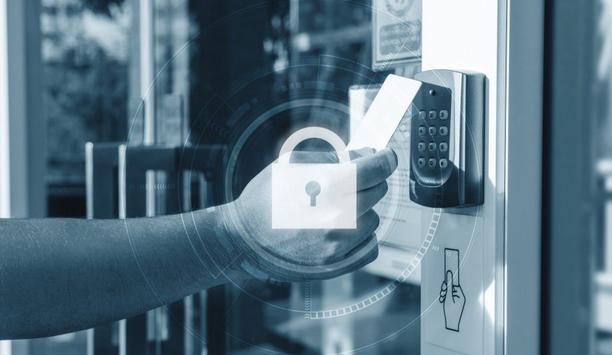
A more secure alternative to 125 kHz proximity cards
Download
Creating a secure and positive healthcare experience
Download
5 reasons to integrate mobile technology into your security solution
Download
Is your access control system as secure as you think?
Download
House Of Smart Cards - How assumptions can open dangerous security gaps
Download
Mobile Access - What you need to know
Download
The evolution of cards and credentials in physical access
Download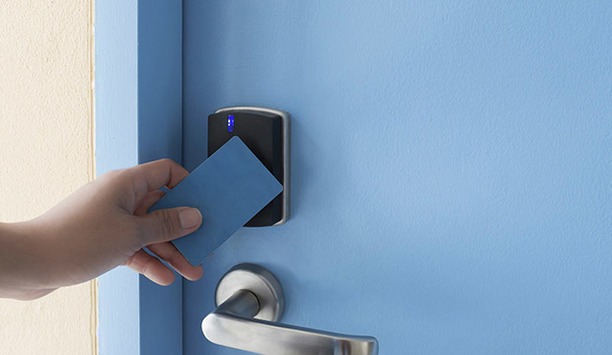
Security risks of ‘universal’ card readers
Download

Videos
Identity management: Manufacturers & Suppliers

A modern guide to data loss prevention
Download
7 proven solutions for law enforcement key control and asset management
Download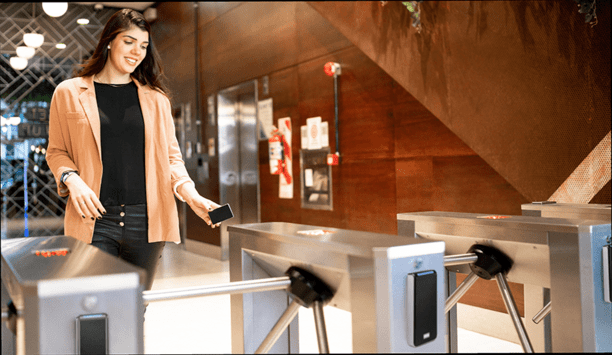
The truth behind 9 mobile access myths
Download
Access control system planning phase 2
Download
Security practices for hotels
Download



